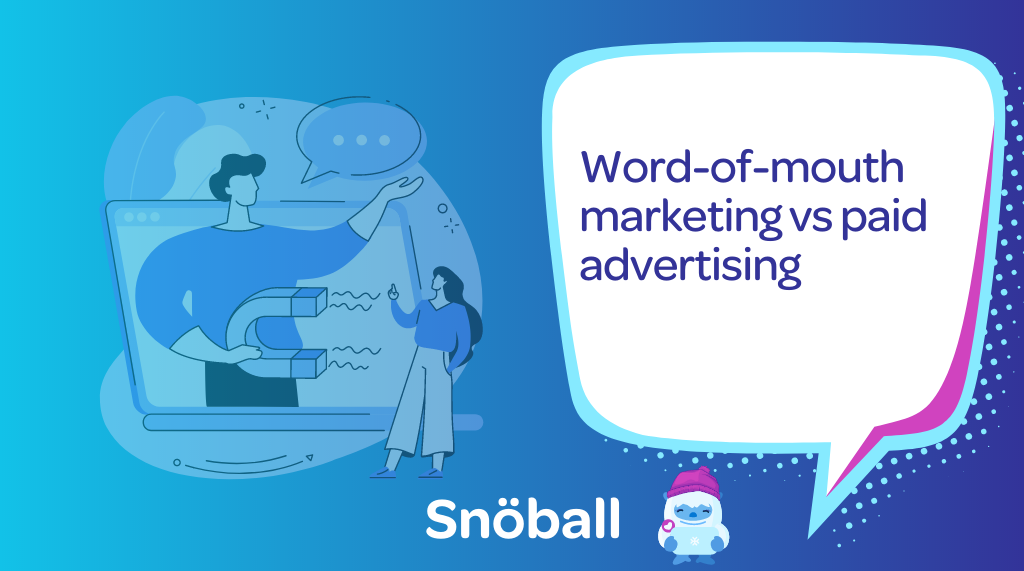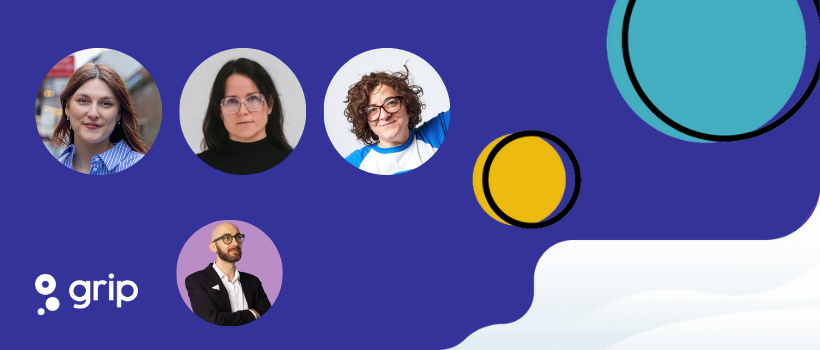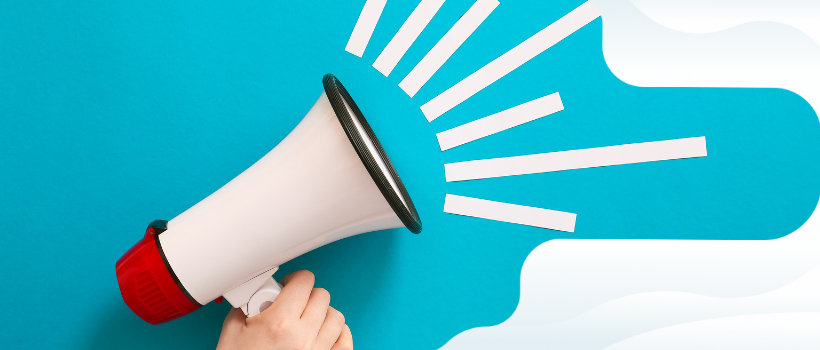Word-of-Mouth Marketing vs. Paid Advertising: Which Strategy Delivers Better Results
As an event marketer, your choice of promotional strategies plays a pivotal role in determining the success of your campaigns.
But one thing we want to look at is how word-of-mouth marketing and paid advertising compare.
Is one better than the other?
Should event marketer consider attendee advocacy and word-of-mouth marketing programs over paid ads?
You may be wondering, what is the difference between word-of-mouth marketing and paid digital advertising? How does the ROI compare?
In this article we decided to pull some data, do some math, and provide some examples to show you the value of word-of-mouth marketing in increasing ticket sales at events.
How and where we got this data
As you may know, there is not one source of truth when it comes to advertising data. Numbers can vary so much depending on a multitude of factors, from the platform you’re using to the keywords you’re targeting. Also, different publications will have slightly different numbers depending on their data pools. What we think makes the most sense is using averages when looking at this data. Please note that these numbers are subject to change over time, and we will adjust them accordingly as significant changes occur. All data in this article is sourced from Q1 2021 to Q4 2022.
In addition to our internal data comparing hundred of clients word-of-mouth campaign, we also used these sources:
- theb2bhouse
- Linkedin (Linkedin’s internal forecasting tool)
- Wordstream
- WebFX
- Statista
The data within this article also does not include the cost of campaign management time, external ad agencies, business costs, and/or third party softwares.
Comparing Word-of-Mouth Marketing to Paid Advertising
When comparing word-of-mouth marketing to paid advertising, we are not suggesting that one is better than the other. Many platforms and advertising strategies are key to a successful marketing strategy and can be highly effective when used correctly and in parallel with each other. To facilitate a fair comparison, we will examine the cost-per-lead/cost-per-conversion of platforms like Google Ads and LinkedIn Ads in contrast to Snöball’s cost-per-registrant.
Findings and highlights
Based on our research, here are the findings we have compiled:
- Small businesses using Google Ads spend between $9,000 and $10,000 per month on their online advertising campaigns. That’s $108,000 to $120,000 per year.
- Average cost of social media advertising ranges between $6,000 to $10,500 per month or $72,000 – $126,000 per year.
- Total paid advertising between search ads and social media can cost between $180,000 – $246,000 per year or $15,000 – $20,500 per month.
Obviously, these figures are very generic and are not purely for getting more event registrants but it gives you a good first idea on how much businesses are spending on paid advertising. We are going to focus on Google ads and Linkedin ads as this is where most of our clients spend their paid advertising budgets to promote their B2B Conferences, Tradeshows and Events.
3. Google Ads
Businesses use Google Ads to strategically target their desired audience, boost visibility on the search engine, and generate cost-effective results. Businesses can tailor their ads to reach potential customers based on demographics, location, and interests. The pay-per-click model ensures that businesses only pay when their ads are clicked, allowing for budget control. Detailed analytics provide measurable results, helping businesses evaluate campaign performance and make data-driven decisions.
An important thing to note here is that google uses a pay-per-click (PPC) model, often called cost-per-click (CPC). This is exactly what you think it would be, you pay for each click your campaign receives, this could be to a landing page, a lead-gen form etc. Google also uses Ad Rank to calculate your CPC. To find the average Conversion Rate (CR) you need to take the number of visitors converted, divide this by the total number of visitors x 100.
Because the cost-per-click can be so varied and doesn’t really tell you much, to make this fair across the board and to measure against Snöball’s data we have pulled together the average cost-per-conversion (or CR for short).
- The average cost per conversion (this number will be much higher than CPC) across Google Ads is $56.11 on the search network and $90.80 on the display network.
- On mobile this number is significantly higher with the average cost per conversion across Google Ads is $80.89 on the search network and $148.68 on the display network.
We spoke to a leading event industry expert on the value of word-of-mouth marketing vs Google Ads ROI for attendee acquisition here.
4. LinkedIn Ads
With LinkedIn ads you can effectively reach individuals based on specific criteria such as industry, job title, and location, ensuring your ads are seen by the most relevant professionals who are likely to be interested in event.
There are three different bidding options available for LinkedIn ads:
Cost-per-click (CPC): You pay when people click on your LinkedIn ad. This is a great option if you want to drive valuable traffic to your event and gain leads.
Cost-per-impression (CPM): With this model, you pay for every 1000 impressions. When people see your ad, you pay for their view, but not interact with it. The goal with these types of ads is to drive brand awareness.
Cost-per-send (CPS): CPS is another pricing model available to your business. This model is used when you send information through sponsored InMail. With this form of advertisement, your information goes directly to leads in their LinkedIn mailbox.
As we looked at the cost-per-conversion in the Google Ads section above, we thought it would be best to show you the cost-per-lead average on Linkedin ads (we can assume a cost-per-conversion would have an even higher cost than a lead. The data varies too much for what we are comparing in this post to try and put a number on things). Below are some cost-per-lead averages across different regions. This is data derived from a total of $1M USD ad spend for 6 months, across multiple ad accounts targeting different regions. At this level of ad spend, this would be a decent estimate.
NAMER: $230
APAC: $80
EMEA: $120
LATAM: $60
For example, if you targeted North America, 50 leads would cost around $11,500
5. Word-of-mouth marketing vs paid advertising
Considering that only 33% of people trust traditional advertising, event marketers should explore alternative strategies to drive new registrations. Snöball specializes in increasing event attendance by leveraging the networks of speakers, attendees, and exhibitors. Snöball’s word-of-mouth marketing platform enables event organizers to not only attract more attendees but also ensure that these individuals align with their target audience.
Let’s compare the results of word-of-mouth marketing using Snöball with major advertising platforms like Google Ads and LinkedIn Ads.
For an in-person, paid event with a capacity of 3,500 attendees, an average Snöball campaign would attract approximately 296 paid registrants (actual paid registrants not clicks, or leads) over an eight-week campaign period and cost an average of $6,500.
Considering ticket prices, the revenue generated from these registrations would be:
- $100 ticket price x 296 = $29,600 ($23,100 expected added revenue using Snöball).
- $250 ticket price x 296 = $74,000 (expected added revenue using Snöball).
We can then compare this data to Google Ads and Linkedin.
If you wanted 296 conversions on Google Ads, this would cost between $16,609-44,009.
If you wanted 296 leads (not even conversions) in the North America region on LinkedIn Ads, this would cost around $68,080.
As you can see, for adding more butts in seats at your events, word-of-mouth marketing is a lot more powerful and has a far higher ROI than paid advertising. In addition, the quality of registrants is a lot higher than advertising platforms as registrants referred to your events are pre-qualified and your ideal registrants profile.
We recently sat down with Matthew Butter, Ansys to discuss how he markets his events with Snöball’s word-of-mouth marketing to attract the right ICP’s to Ansys’ events, from event. Watch the webinar here.

“Not only were we thrilled with the quantity of referrals, the referrals were exactly the type of audience we were hoping for. They were our Ideal Customer Profiles.”
Matthew Butter
–
Ansys
Bottom-Line
In summary, advertising platforms like Google Ads and LinkedIn Ads are effective for certain marketing objectives, such as brand awareness campaigns. However, when it comes to acquiring more attendees for technology events, association conferences, or niche exhibitions, the cost of acquiring new participants through these platforms outweighs the benefits, even before considering the quality of the registrants. This is where word-of-mouth marketing shines, and it’s the reason Snöball exists. Snöball’s word-of-mouth marketing campaign platform drives more registrants and offers a significantly higher ROI compared to Google Ads and LinkedIn Ads.
We are going to add more information, update statistics, and show the power of word-of-mouth marketing even more in future updates to this post, so stay tuned.
Want a more in-depth look at how to implement word-of-mouth marketing for your upcoming events using Snöball? Book a 17-min chat with us here.




